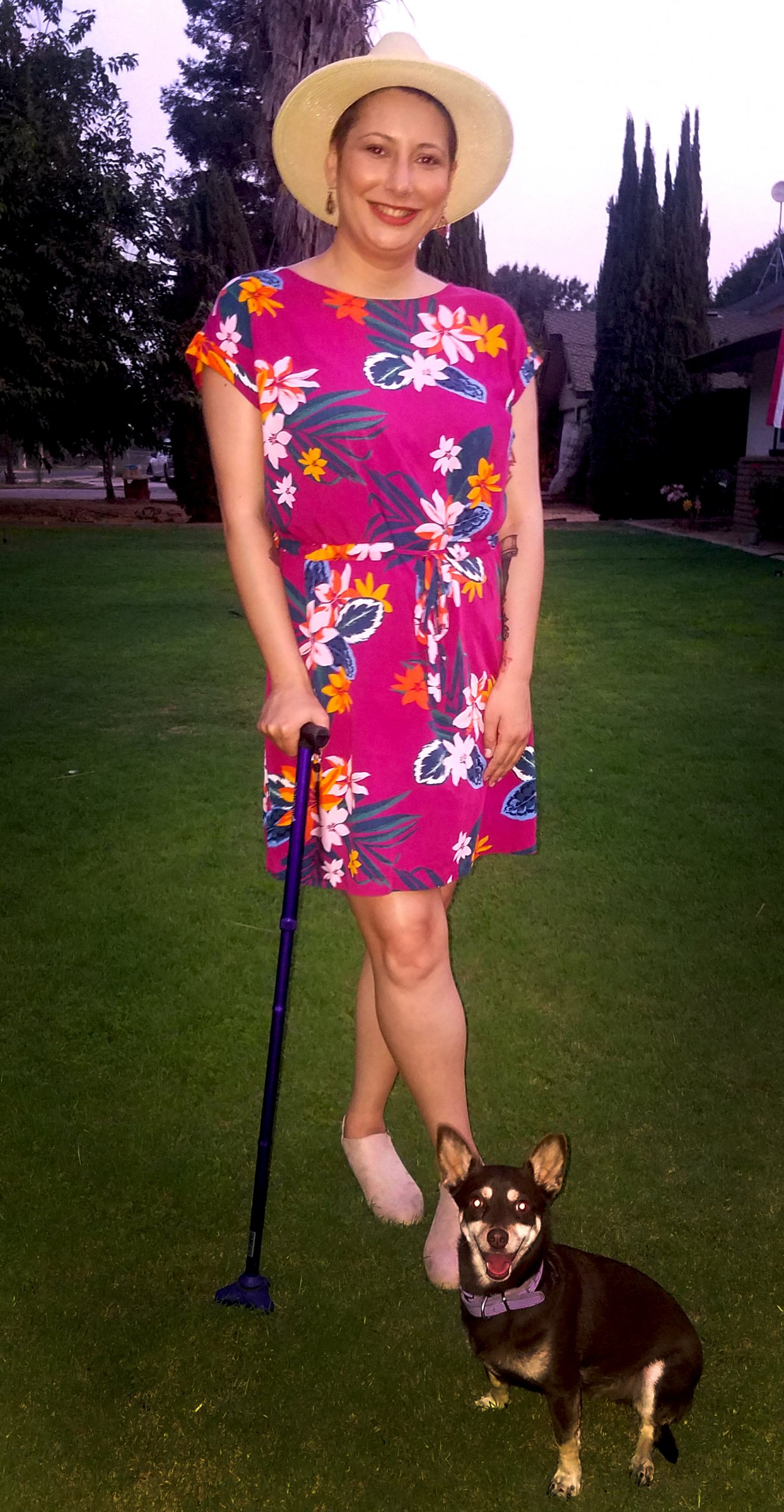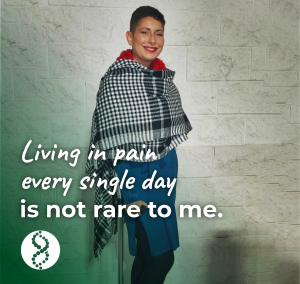By: Shanae Fernandez, living with CMT1X
For as long as I can remember, I’ve been different. As a child, running, playing and keeping up with my friends was a challenge. I felt slow and tripped a lot. In high school, I played sports but never felt good enough at anything. On the basketball court, I fell regularly and couldn’t dribble to save my life. On the track, I had to tape my ankles tightly so they wouldn’t roll or twist. I had horrible leg cramps, and my feet would remain stuck in an arched position.
“It’s growing pains,” doctors said. “It’s in your head,” doctors said.
Although the pain was unbearable, no one seemed to believe me. I told everyone I was just clumsy. I never trusted anyone with the truth. I was afraid of being shamed for being different.
After graduating, I worked at the Home Depot. For more than five years, I climbed up and down ladders and lifted heavy paint buckets, windows and doors. I began struggling to hold things in my hands and had horrible pain in my arms and elbows.

A Long-Awaited Search for Answers
My husband, who I met working at Home Depot, urged me to see my doctor. He noticed my pain levels, how the pain affected my moods and that I couldn’t feel the extremely hot water while washing dishes.
Finally, in 2017, I received confirmation that the intense pain I’d been experiencing all my life was most certainly not in my head.
At first, doctors told me I had carpal tunnel syndrome with possible nerve damage and would need to see a specialist. The specialist requested more testing. Doctors performed an Electromyography (EMG) and had me meet with my neurologist. She examined me, my hands, feet and ankles. We reviewed my family history — my younger sister has bad hammertoes and has had one unsuccessful surgery to straighten them out.
On the day after my 29th birthday, my neurologist informed me that I have Charcot-Marie-Tooth 1X and that it was progressive and incurable.
Incurable.
During the first year after my diagnosis, I fell into a deep depression and felt very alone. My family had a hard time accepting this diagnosis, almost like it couldn’t be real or that I’d made it up.
Making a Rare Disease More Commonly Known & Accepted
Too few people know about CMT, but its debilitating effects impact me every minute of every day. It may be considered a rare disease, but CMT is not rare to me. I wanted to change how little people know about CMT and the lack of confidence and fear I’ve experienced by advocating as much as possible to anyone who will listen.

I recently spoke about CMT to local high school students. I loved opening all their young minds to what it’s like to live with a rare disease. At the end of my presentation, I felt seen and heard. You never know how your story can change someone else’s life. Talking about my life with CMT has changed my life. I’m proud to be an ambassador for the CMT Research Foundation and actively contribute to the future through my journey.
Today, the muscles in my arms, hands, legs, feet and back continue to weaken. Buttoning a shirt or clasping the buckles on a child’s car seat is a nightmare for my fingers. My hands struggle to hold things and often drop items. My ankles give out if I step wrong. I use a cane to prevent falling because I lose my balance easily.
CMT is progressive, which means I don’t know how or when things will get worse. That’s a scary way to go through life, but I live it one day at a time. A treatment would mean everything to me and the future of my family. I’m committed to making CMT known to the world and helping fund the research to treat and cure it.
Delivering Treatments & Cures Faster for CMT Patients Like Shanae
You can give Shanae and everyone living with CMT more than hope by making a donation to the CMT Research Foundation to fund the most promising CMT research that’s solely focused on delivering treatments and cures during our lifetime.
“Your donation will change lives, including mine. The Foundation will be able to invest in more in-depth CMT research. Just think about all the lives you will change. All I can say is a big thank you for your support.”
— Shanae F., living with CMT1X
